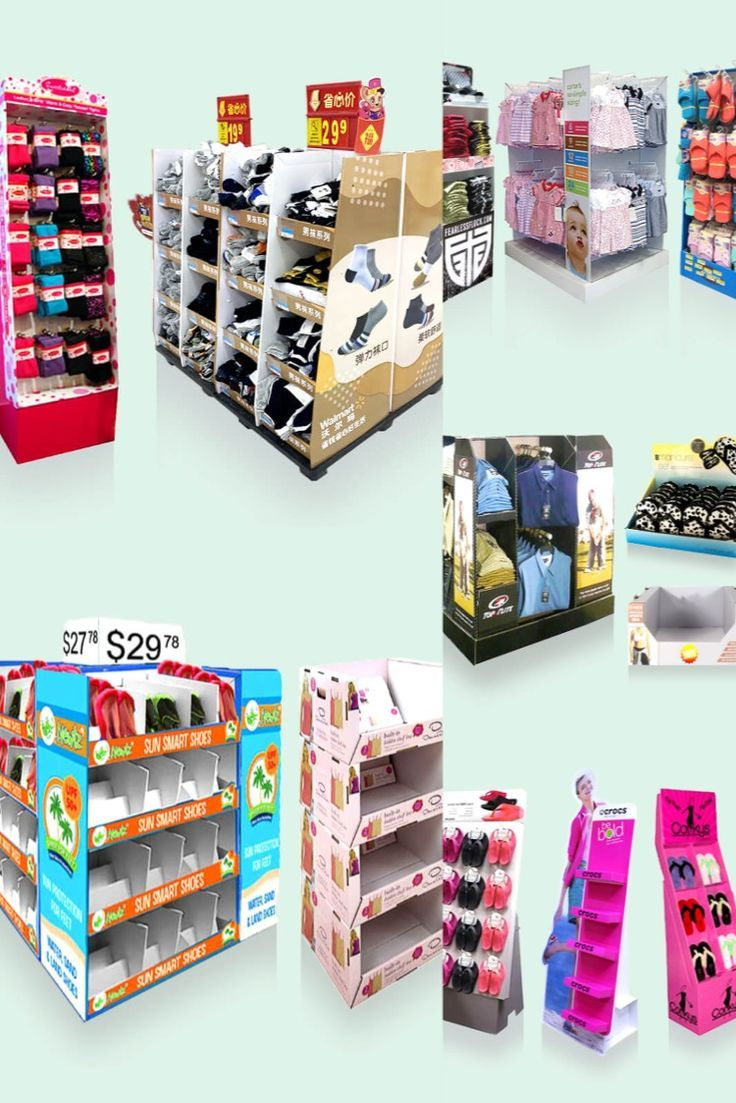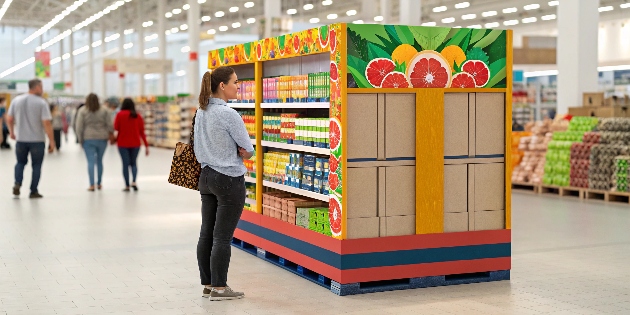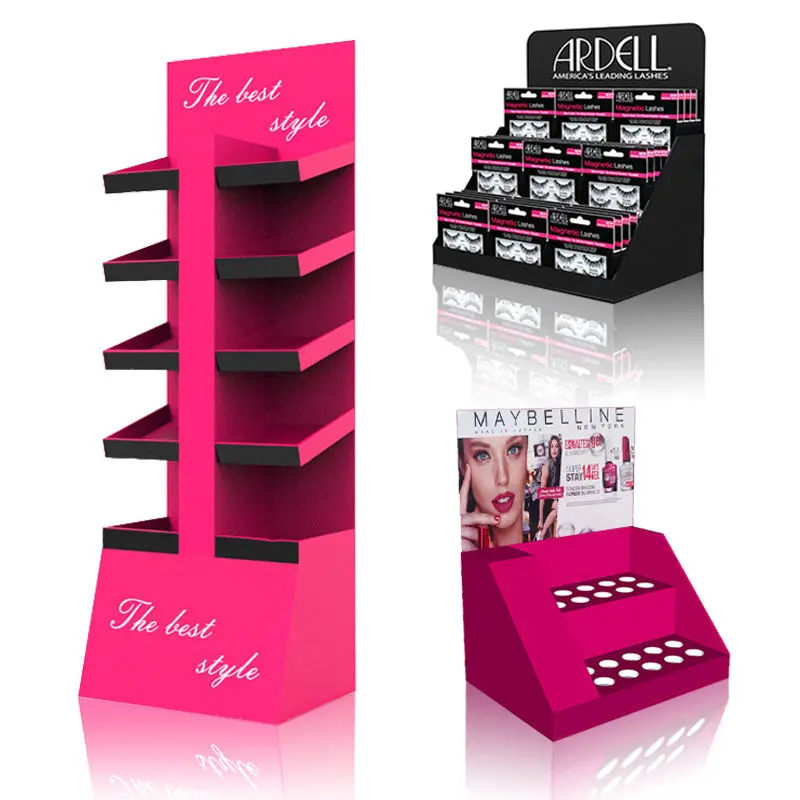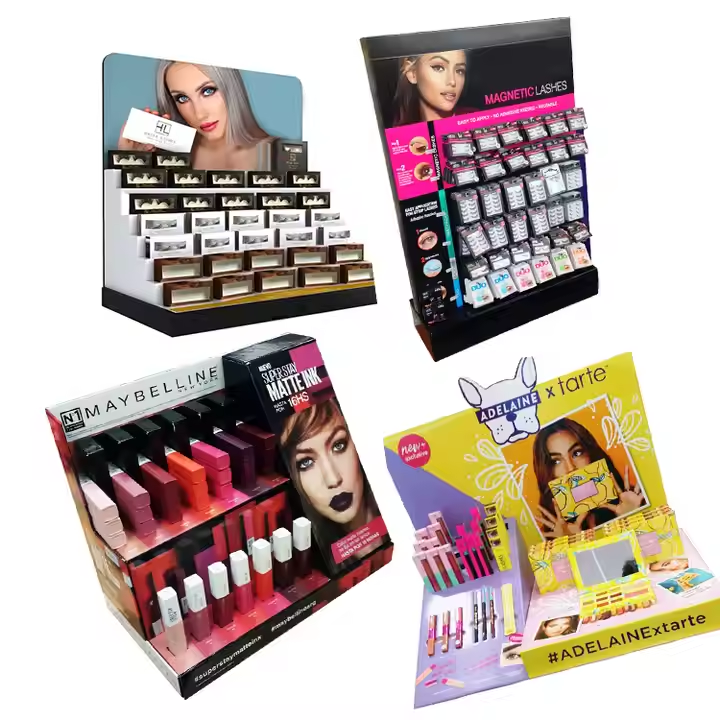Your products are getting lost on crowded shelves. This means you are losing sales and brand visibility. Custom cardboard floor displays can make your product the star of the show.
Cardboard floor displays are used across many industries, including food, electronics, and cosmetics, to drive sales. They provide a low-cost, versatile way to launch new products, run seasonal promotions, or highlight special offers directly on the retail floor, grabbing customer attention at the point of decision.

I have been in the cardboard display business for over 16 years. During that time, I have seen these simple structures create amazing results for all kinds of brands. They are more than just cardboard; they are silent salespeople. But before we get into the specifics of how different industries use them, it helps to understand the language we use. People often have different names for these displays, which can create confusion. Let's clear up some of the most common terms and questions first. This will help you understand their real power.
What are cardboard displays called?
Are you ever confused by the different names for cardboard displays? Using the wrong term with a supplier can lead to mix-ups and getting the wrong product. Let's clarify the common names.
Cardboard displays are known by many names, including POP (Point of Purchase) displays, POS (Point of Sale) displays, floor stands, or FSDUs (Free Standing Display Units). The name often changes based on its location in a store or its specific job, but they all refer to temporary promotional displays.
In my experience, the terms can get mixed up, but they each have a slightly different meaning. A designer like Peter needs to know these differences to meet a client's specific goals. For example, a POP display1 is placed where customers make buying decisions, like in the middle of an aisle. A POS display2 is usually smaller and sits near the cash register to encourage last-minute buys. The term FSDU3, or Free Standing Display Unit, is very common in Europe and is a more technical way of saying it’s a standalone display that isn't part of the standard store shelving. It’s important to communicate clearly. Knowing these terms helps ensure the final product does exactly what the client needs it to do, right where it needs to do it.
Here is a simple table to help you remember the key terms:
| Term | Full Name | Typical Location/Use |
|---|---|---|
| POP Display | Point of Purchase4 | In-aisle, endcaps. Where buying decisions happen. |
| POS Display | Point of Sale | Near the checkout counter. For impulse buys5. |
| FSDU3 | Free Standing Display Unit | Anywhere on the sales floor. A self-contained unit. |
| Dump Bin | N/A | A large bin for discounted or assorted small items. |
What does PDQ stand for in business?
Have you ever heard the term "PDQ6" and felt out of the loop? Not knowing this common acronym can be confusing in conversations with suppliers or retailers. Let's define what it means.
In the display and logistics business, PDQ stands for "Pretty Darn Quick." It describes a type of display that is shipped pre-filled with products. This design allows retailers to set it up on the shelf or floor almost instantly, saving a lot of time and effort.

I remember working with a beverage company that needed a fast launch for a new energy drink. The key was retailer acceptance. Big stores don't want displays that take a long time to build and stock. So, we designed a PDQ floor display. It shipped flat with the drinks already inside, divided by cardboard inserts. All the store staff had to do was pop it open and place it on the floor. The name "Pretty Darn Quick" is not just a catchy phrase; it's a promise of efficiency. It tells the retailer that your product will not create extra work for their team. For a designer, thinking "PDQ6" means you are focused not just on how the display looks, but on how easy it is for the end-user, the store employee, to handle. This focus on efficiency is a huge value-add.
What is the point of purchase pop display?
Are your displays just holding products, or are they actively selling them? A display that just sits there is a huge missed opportunity and a waste of money. A great POP display1 grabs customers.
A Point of Purchase4 (POP) display is any marketing material placed where a customer is about to make a buying decision. Its main goal is to influence that choice by highlighting a product, advertising a special offer, or creating an engaging brand experience right in the store aisle.

The real purpose of a POP display is to interrupt a shopper's routine. I always tell my design team that we are building "shopper-stoppers7," not just boxes. The customer is walking down the aisle with their list, but our display needs to make them stop, look, and consider a product they weren't planning to buy. This is where design creativity is so important. For a snack food company, we might use bright, fun graphics and a shape that looks like a giant bag of chips. For a cosmetic brand, we could add a small mirror and a "Try Me" section with samples. For electronics, the display might have clear bullet points listing the key features. The goal is always the same: engage and persuade. A great POP display tells a story and makes a strong offer, turning a passive looker into an active buyer.
What does PDQ mean in retail?
Do you want retailers to love stocking your product? If your displays are difficult or time-consuming to set up, they might get ignored and left in the backroom. PDQ makes your brand easy to work with.
In a retail setting, PDQ ("Pretty Darn Quick") specifically means a display is "shelf-ready" or "retail-ready8." It arrives pre-assembled and often pre-stocked, letting staff place it on the floor or shelf with almost no effort. This directly saves the retailer time and labor costs.
[^6] Display in a Retail Environment A store employee easily setting up a PDQ floor display full of products](https://leader-display.com/wp-content/uploads/2025/07/cardboard-display-logo-merchandisers.jpg)
From a retailer's point of view, time is money. I’ve had many conversations with store managers, and their biggest frustration is products that are complicated to merchandise. They have limited staff, and they need to get products onto the sales floor as quickly as possible. This is where a PDQ display is the perfect solution. It solves some of their biggest problems. A PDQ display is a partnership between the brand and the retailer. The brand gets its products displayed correctly and quickly, and the retailer gets a display that is almost zero work. For designers like Peter, this is a critical concept. A design is only successful if it works in the real world. A "beautiful" display that a busy employee can't figure out how to build in under a minute is a failed design.
| Retailer Challenge | How a PDQ Display Solves It |
|---|---|
| High Labor Costs | Reduces staff time needed for unboxing products and stocking shelves. |
| Slow Product Rollouts | Products are on the sales floor almost instantly after the delivery truck arrives. |
| Inconsistent Branding | The display is set up exactly as the brand designed it, every single time. |
| Wasted Backroom Space | The shipping carton is often part of the display itself, reducing packaging waste. |
Conclusion
Cardboard displays, known by names like POP or PDQ, are very powerful tools. They help brands in any industry capture customer attention and increase sales through smart, efficient design.
-
Understanding POP displays can enhance your marketing strategy by effectively influencing customer buying decisions. ↩ ↩
-
Learn how POS displays can boost last-minute purchases and improve sales at checkout counters. ↩
-
Discover the benefits of Free Standing Display Units and how they can enhance product visibility. ↩ ↩
-
Find out how Point of Purchase displays can effectively engage customers and drive sales. ↩ ↩
-
Understand the psychology behind impulse buys and how to design displays that trigger them. ↩
-
Explore how PDQ displays streamline the stocking process and save retailers time and effort. ↩ ↩
-
Learn how to create displays that capture customer attention and encourage impulse buying. ↩
-
Understanding retail-ready displays can help you design products that are easy for retailers to stock. ↩






